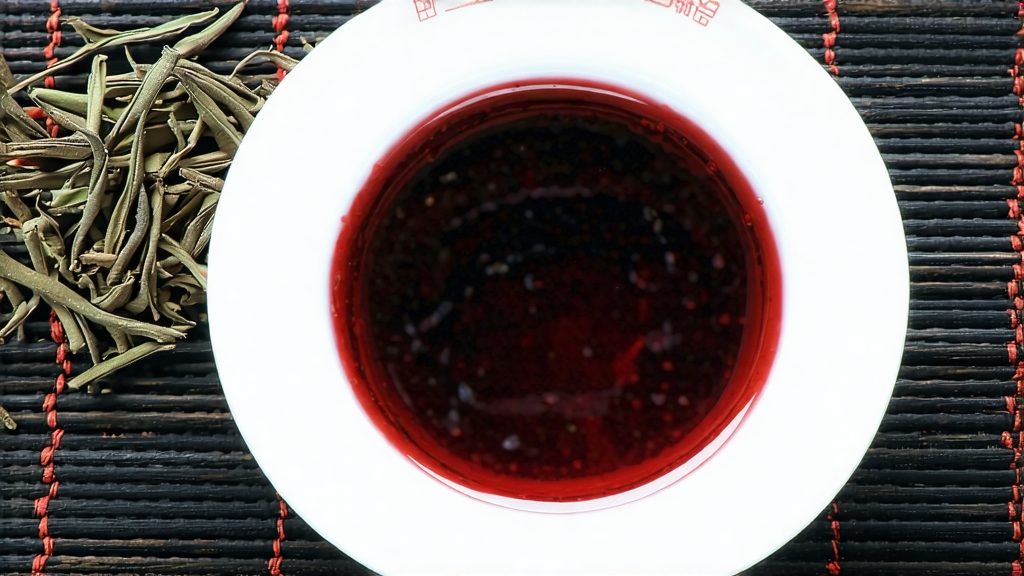
If every tea has a birthplace, then the small village of Tongmu, tucked into the granite cliffs of China’s Wuyi Mountains in northern Fujian, is the cradle of black tea. Here, four centuries ago, a happy accident of war, haste, and fragrant pine wood produced Lapsang Souchong—today celebrated as the first black tea ever created and still the only one whose leaf is cured over open pinewood fires. To international drinkers the name evokes campfire mystique; to Chinese connoisseurs it carries the protected-origin seal of Zheng Shan Xiao Zhong, a guarantee that the leaf was picked, withered, smoked, and fired within the 600-square-kilometer core zone of the Wuyi Nature Reserve. Understanding Lapsang Souchong is therefore a journey into both the genealogy of black tea and the living culture of a mountain microclimate where mist, mineral soil, and resinous air conspire to create a liquor that is at once smoky, sweet, and unmistakably mineral.
Historical records first mention “Xiao Zhong” in 1646, late in the Ming dynasty, when Qing armies pushed through Fujian and disrupted the green-tea drying schedule. To save the harvest, farmers spread fresh leaves over pine fires, accelerating withering and oxidation while imparting a penetrating smoke. The darkened leaf traveled north along the Tea Road to Moscow and west via Dutch traders to London, where it became the “bohea” that filled the cups of Samuel Pepys and Catherine of Braganza. By the early eighteenth century Lapsang Souchong had fathered every other black tea: Keemun craftsmen copied its oxidation technique, Assam planters lifted its seeds, and Ceylon’s James Taylor studied its leaf structure. Yet only in Tongmu does the original genetic line—Camellia sinensis var. sinensis, the small-leaf China jat—survive on terraced plots 800–1,500 m above sea level, shaded by towering Masson pines and bamboo.
Two distinct styles now leave the Wuyi ports. Traditional Lapsang Souchong, the “pine-smoke” version, follows the ancient protocol: buds and the top two leaves are plucked in late May after the spring equinox rains, then withered over soft pinewood embers for eight to ten hours. Oxidation proceeds slowly in bamboo baskets lined with cotton cloth; when the leaf turns chestnut-brown, another short smoking fixes the aroma before final charcoal baking. The result is a jet-black, tightly twisted strip that smells of pine resin, longan fruit, and cured ham. In 2005 a new, unsmoked style called “Wuyi unsmoked Xiao Zhong” was developed for the domestic market: here the leaf is withered naturally in heated rooms, oxidized under precise humidity, then baked at low temperature to preserve honeyed notes of dried apricot and rock sugar. Both styles share a cultivar known locally as cai cha, a mixed population of heirloom bushes whose roots dive into weathered granite rich in potassium and manganese, imparting the celebrated “rock rhyme” (yan yun) that lingers on palate and tongue.
Crafting either version is labor-intensive. One kilogram of finished tea demands 55,000 buds, all picked before 10 a.m. while dew still glistens. The moment the basket is full, leaves are carried downhill to the village’s smokehouses, Qing-era wooden structures whose beams are impregnated with decades of resin. Withering racks built from woven bamboo sit two meters above hearths fueled exclusively by 40-year-old Masson pine; greener wood is rejected because its sap produces bitter phenols. Temperature is judged by the back of the master’s hand: too hot and the leaf chars, too cool and the signature “pine-sweet” never develops. Oxidation follows the Fujian maxim “low and slow”—25 °C, 75 % relative humidity, four to five hours—until the leaf’s grassy edge gives way to malt. The final charcoal bake, done in bamboo sieves over glowing embers of local hardwood, reduces moisture to 3 % and seals in a whisper of caramel that balances the smoke.
To brew Lapsang Souchong Western-style, use 2.5 g of leaf per 250 ml of water at 95 °C and steep three minutes; the liquor glows amber-red and delivers campfire aroma without acrid edges. Yet the leaf truly sings under gongfu discipline: 5 g in